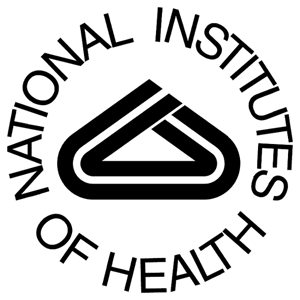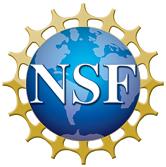
 Earlier this afternoon, the National Science Foundation (NSF) and National Institutes of Health (NIH) held a joint webinar addressing the Core Techniques and Technologies for Advancing Big Data Science and Engineering (BIGDATA) solicitation announced in late March — the cornerstone of the Federal government’s $200 million Big Data R&D Initiative (more after the jump).
Earlier this afternoon, the National Science Foundation (NSF) and National Institutes of Health (NIH) held a joint webinar addressing the Core Techniques and Technologies for Advancing Big Data Science and Engineering (BIGDATA) solicitation announced in late March — the cornerstone of the Federal government’s $200 million Big Data R&D Initiative (more after the jump).
“Today we are presenting the first NSF-NIH webinar on the [solicitation],” Suzi Iacono, senior science advisor for NSF’s Directorate for Computer and Information Science and Engineering (CISE) and co-chair of the Federal government’s Big Data Senior Steering Group (SSG), kicked off the hourlong meeting. “As everyone knows… the world is producing zetabytes of data each year, but it’s not just the volume; it’s also the velocity and the diversity and heterogeneity of the data. The potential is huge if we are going to turn data into actionable knowledge.”
Added Karin Remington, director of the National Institute for General Medical Sciences’s (NIGMS) Division of Biomedical Technology, Bioinformatics, and Computational Biology, and co-chair of the Big Data SSG, “I want the listeners to know that this solicitation and the Big Data Initiative is [the result of] a lot of agencies who came together around the table in the last year to identify core challenges that we share in common, particularly in the core technologies and techniques sorts of area, but also in [domain research areas]. Each of our agencies has specific mission needs that need to be addressed, and our national Big Data Initiative is meant to encompass those as well”
From there, Vasant Hanovar, program director within NSF/CISE, conducted the webinar. Some key points that emerged:
- The BIGDATA solicitation is a part of NSF’s broader Cyberinfrastructure Framework for 21st Century Science and Engineering (CIF21) cross-cutting initiative. There are numerous other solicitations beyond BIGDATA.
- The three “perspectives” within the solicitation can be thought of as follows: Data collection and management (DCM) represents the kinds of research members of the database and information retrieval communities have been pursuing, but on a much more expanded scale; Data analytics (DA) spans machine learning, data mining, visualization, etc., approaches; and E-science collaboration environments (ESCE) captures the foundational aspects of cyberinfrastructure for collaboration.
- The focus of the solicitation is truly on fundamental research — new techniques, new algorithms, new analysis tools, etc. — but such research may be motivated by one or more of the problem domains specified in the solicitation.
- In lieu of NSF’s usual broader impacts criterion, PIs must address capacity building, i.e., activities critical to the growth and health of this emerging area of research and education. From the solicitation, capacity building includes: “(1) appropriate models, policies, and technologies to support responsible and sustainable big data stewardship; (2) training and communication strategies, targeted to the various research communities and/or the public; and 3) sustainable, cost-effective infrastructure for data storage, access and shared services.”
- Mid-scale collaborative proposals must include a coordination plan of up to two pages in addition to the standard 15-page proposal.
Representative slides from the webinar follow…
An archive of the webinar, including the complete slide deck, will be posted here shortly.
In the meanwhile, to learn more, check out the BIGDATA solicitation here or frequently asked questions here. For NIH-specific details, see a NIH announcement here. If you have additional questions about the solicitation, e-mail them to bigdata@nsf.gov.
And be sure to read our previous coverage about the Big Data R&D Initiative.
(Contributed by Erwin Gianchandani, CCC Director)

![BIGDATA Webinar [image courtesy NSF]. BIGDATA Webinar [image courtesy NSF].](https://cccblog.org/wp-content/uploads/2012/05/bd2.jpg)
![BIG DATA Webinar [image courtesy NSF]. BIGDATA Webinar [image courtesy NSF].](https://cccblog.org/wp-content/uploads/2012/05/bd5.jpg)
![BIG DATA Webinar [image courtesy NSF]. BIGDATA Webinar [image courtesy NSF].](https://cccblog.org/wp-content/uploads/2012/05/bd6.jpg)
![BIG DATA Webinar [image courtesy NSF]. BIGDATA Webinar [image courtesy NSF].](https://cccblog.org/wp-content/uploads/2012/05/bd7.jpg)
![BIG DATA Webinar [image courtesy NSF]. BIGDATA Webinar [image courtesy NSF].](https://cccblog.org/wp-content/uploads/2012/05/bd8.jpg)
![BIG DATA Webinar [image courtesy NSF]. BIGDATA Webinar [image courtesy NSF].](https://cccblog.org/wp-content/uploads/2012/05/bd9.jpg)
![BIG DATA Webinar [image courtesy NSF]. BIGDATA Webinar [image courtesy NSF].](https://cccblog.org/wp-content/uploads/2012/05/bd10.jpg)
![BIG DATA Webinar [image courtesy NSF]. BIGDATA Webinar [image courtesy NSF].](https://cccblog.org/wp-content/uploads/2012/05/bd11.jpg)
![BIG DATA Webinar [image courtesy NSF]. BIGDATA Webinar [image courtesy NSF].](https://cccblog.org/wp-content/uploads/2012/05/bd12.jpg)
![BIG DATA Webinar [image courtesy NSF]. BIGDATA Webinar [image courtesy NSF].](https://cccblog.org/wp-content/uploads/2012/05/bd13.jpg)
![BIG DATA Webinar [image courtesy NSF]. BIGDATA Webinar [image courtesy NSF].](https://cccblog.org/wp-content/uploads/2012/05/bd14.jpg)
![BIG DATA Webinar [image courtesy NSF]. BIGDATA Webinar [image courtesy NSF].](https://cccblog.org/wp-content/uploads/2012/05/bd15.jpg)
![BIG DATA Webinar [image courtesy NSF].](https://cccblog.org/wp-content/uploads/2012/05/bd16.jpg)
![BIG DATA Webinar [image courtesy NSF]. BIGDATA Webinar [image courtesy NSF].](https://cccblog.org/wp-content/uploads/2012/05/bd17.jpg)
![BIG DATA Webinar [image courtesy NSF]. BIGDATA Webinar [image courtesy NSF].](https://cccblog.org/wp-content/uploads/2012/05/bd18.jpg)
![BIG DATA Webinar [image courtesy NSF]. BIGDATA Webinar [image courtesy NSF].](https://cccblog.org/wp-content/uploads/2012/05/bd19.jpg)
![BIG DATA Webinar [image courtesy NSF]. BIGDATA Webinar [image courtesy NSF].](https://cccblog.org/wp-content/uploads/2012/05/bd20.jpg)
![BIG DATA Webinar [image courtesy NSF]. BIGDATA Webinar [image courtesy NSF].](https://cccblog.org/wp-content/uploads/2012/05/bd21.jpg)
![BIG DATA Webinar [image courtesy NSF]. BIGDATA Webinar [image courtesy NSF].](https://cccblog.org/wp-content/uploads/2012/05/bd22.jpg)
![BIG DATA Webinar [image courtesy NSF]. BIGDATA Webinar [image courtesy NSF].](https://cccblog.org/wp-content/uploads/2012/05/bd23.jpg)
![BIG DATA Webinar [image courtesy NSF]. BIGDATA Webinar [image courtesy NSF].](https://cccblog.org/wp-content/uploads/2012/05/bd24.jpg)
![BIG DATA Webinar [image courtesy NSF]. BIGDATA Webinar [image courtesy NSF].](https://cccblog.org/wp-content/uploads/2012/05/bd25.jpg)
![BIG DATA Webinar [image courtesy NSF]. BIGDATA Webinar [image courtesy NSF].](https://cccblog.org/wp-content/uploads/2012/05/bd26.jpg)
![BIG DATA Webinar [image courtesy NSF]. BIGDATA Webinar [image courtesy NSF].](https://cccblog.org/wp-content/uploads/2012/05/bd28.jpg)
![BIG DATA Webinar [image courtesy NSF]. BIGDATA Webinar [image courtesy NSF].](https://cccblog.org/wp-content/uploads/2012/05/bd29.jpg)
![BIG DATA Webinar [image courtesy NSF]. BIGDATA Webinar [image courtesy NSF].](https://cccblog.org/wp-content/uploads/2012/05/bd30.jpg)
![BIG DATA Webinar [image courtesy NSF]. BIGDATA Webinar [image courtesy NSF].](https://cccblog.org/wp-content/uploads/2012/05/bd31.jpg)









Trackbacks /
Pingbacks